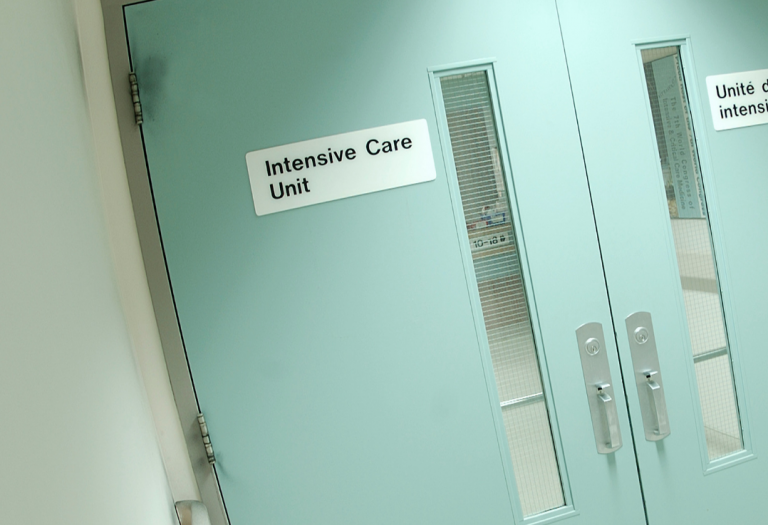Research out today shows that healthtalk.org videos are effective tools for health service improvement in intensive care units (ICUs). The study by Darbyshire and Hinton talks about how our patient stories inspired ICU staff to make changes that reduced noise levels.
The problem with noise and intensive care.
Noise levels in ICUs are often far higher than guidelines set by the World Health Organisation (WHO), even though this causes stress and poor sleep for patients. Too much noise can lead to delirium, which in turn is linked to more time in hospital and long-term health problems. Julie Darbyshire describes her surprise when she visited an ICU for the first time:
Julie Darbyshire, 2017, Intensive Care Society Conference.
“I had a fixed image of what an ICU was like, I’d seen it on Casualty. I expected to find light rooms, loads of windows, lots of quiet…nobody really speaking to each other but if they did, very hushed… [An ICU] is not like that, I was stunned at how noisy and how chaotic it was. There were just so many more people around than I thought”
Darbyshire checked noise levels in the ICU and found they were two times higher than the
Health service improvement and reducing noise in intensive care.
Health service improvement needs the staff to be on board, so the authors of the paper worked with medical educators, staff and patients to design a package of training. They wanted to raise awareness and help staff to come up with ideas to tackle the problem. Staff saw video interviews with patients and took part in a 6-minute simulation of an ICU patient’s experience.
We (The Dipex Charity) created short films made up of healthtalk.org video clips of former intensive care patients talking about their experience. People talked about disturbances they experienced in ICU, specifically the frequent alarms, talking and bright lighting. Throughout the video, titles asked questions and encouraged staff to think about improvements. Staff were positive about the training session and said that they would do more to reduce noise levels.
Julie Darbyshire, 2017, Intensive Care Society Conference
“There’s heaps more patient reassurance, lots of focus on noise. Some people say they will very specifically turn down their own verbal volumes and limit unnecessary interactions”
The staff made practical changes in order to reduce noise levels as well. Patients said that they had thought the sound of metal bins banging shut was, in fact, the sound of gunfire or explosions. With this in mind, the team got rid of the metal bins and replaced them with quiet plastic bins. New guidelines also addressed the issue of loud alarms. Staff had more control of alarm volume and having guidelines gave junior staff the confidence to raise the issue with senior colleagues. Finally, a new policy restricted light and sound levels at night to help patients sleep better. Overall the project reduced sound levels by 4 decibels.

What is Accelerated Experience-based co-design?
The SILENCE study builds on a study by Locock et al (2014) which had used healthtalk.org videos to great effect. Locock et al used our patient videos in order to test an accelerated form of ‘experience-based co-design’ (AEBCD) for health service improvement. Experience-based co-design (EBCD) is a way to improve health services that uses videos of interviews with local patients. The patients talk about their experience of the service and say what could be done better. Staff and patients watch the videos together and talk about how they can solve the problems. However, it can be costly and time-consuming to collect new sets of patient interviews each time. To speed up the process, Locock used video interviews that had already been collected for healthtalk.org from across the UK.
Locock et al found that AEBCD led to changes that were equally as good as those made using local patient interviews (EBCD). Not only that, but AEBCD also saved time and money. Furthermore, the patient stories were relevant even though they were not specific to the service in question. This is because healthtalk.org video clips come from studies that aim to collect a wide range of experiences. In fact, the staff were more open to feedback when it wasn’t aimed directly at their work.
Would you like to use AEBCD for your health service improvement project? We have
Find out more:
Read the full paper: Darbyshire, JL, Hinton, L (2018) Using patient narratives to design an intervention to reduce noise in the intensive care unit. Journal of Health Design. 2018;3(2):109–112.
Listen to Julie Darbyshire’s Speech to the Intensive Care Society in December 2017.
Visit the healthtalk.org section on intensive care patient experiences.



